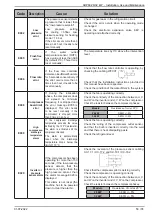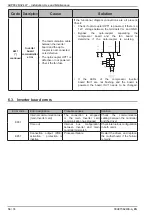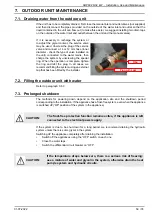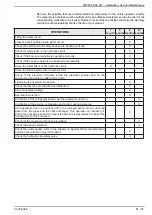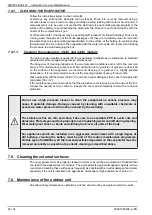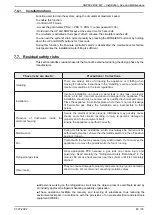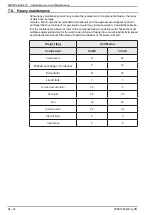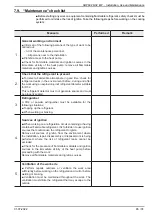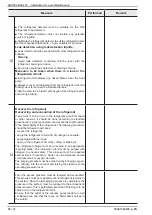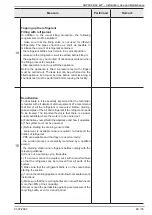
01-07-2022
67 / 74
AHP60 26/32 kW -
Installation, Use and Maintenance
Measure
Performed
Remark
8
■ In particular, care must be taken to ensure that, when
working on electrical components, the units are not modified
to such an extent that the protection they offer is affected.
Such modifications include damage to cables, too many
connections on a single terminal block, connections that do
not comply with the manufacturer's specifications, damage to
seals and incorrect installation of cable glands.
■ Ensure that the device is installed correctly.
■ Check that the seals are fully inserted. This ensures that the
seals provide reliable protection against the penetration of a
flammable atmosphere. Change if defective.
Warning
The use of silicone as a sealant may affect the operation of
the leak detectors. Do not use silicone as a sealant.
■ Replacement parts must meet the manufacturer's
specifications.
■ Work on components suitable for flammable atmospheres:
these components do not have to be powered down.
9
Repair work on components suitable for use in
flammable atmospheres
■ While we cannot completely rule out exceeding the
permissible voltages and currents, permanent capacitive or
inductive loads must not be connected to the device.
■ Only components suitable for a flammable atmosphere may
be powered up in the vicinity of such an atmosphere.
■ Use only suitable original parts or components approved
by Hamworthy Heating. Other components may cause the
refrigerant to ignite if leaked.
10
Wiring
■ Check if the wiring is subject to wear, corrosion, traction,
vibrations, sharp edges or other unfavourable surrounding
influences.
■ When checking, also take into account the effects of ageing
or constant vibrations at the compressor and fans.
11
Refrigerant detectors
■
Do not use potential ignition sources to detect refrigerant and
leaks.
■ Flame detectors or detectors with naked flames are
prohibited.
12
Leak detection
The following leak detection methods are suitable for
installations with flammable refrigerants:
Leak detection using electronic refrigerant
detectors:
■ If necessary, electronic refrigerant detectors do not have the
necessary sensitivity or must be calibrated to the corresponding
range. Calibrate in a refrigerant-free environment.

